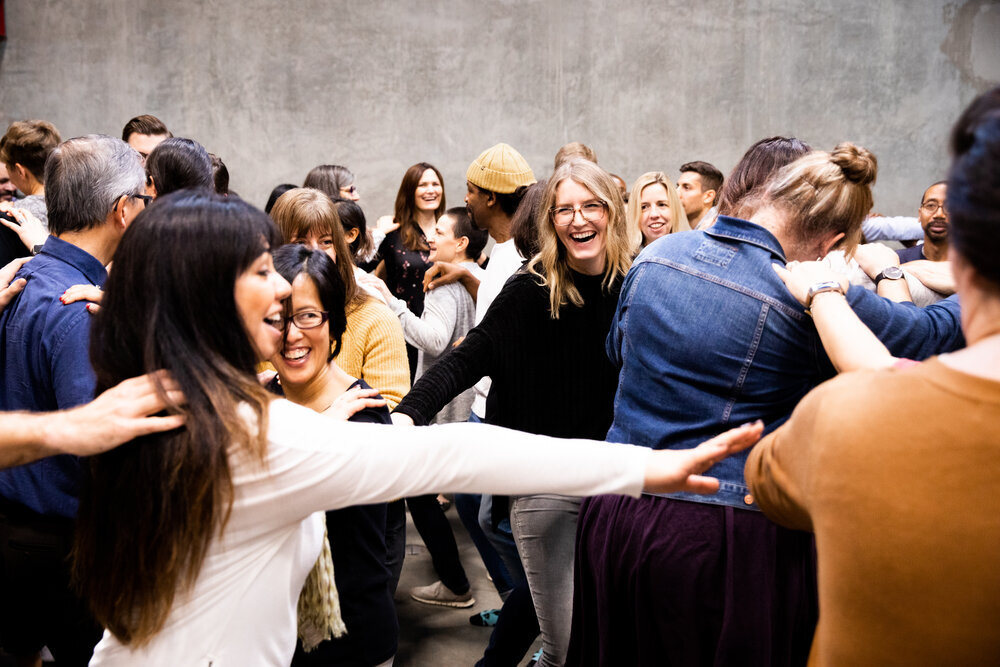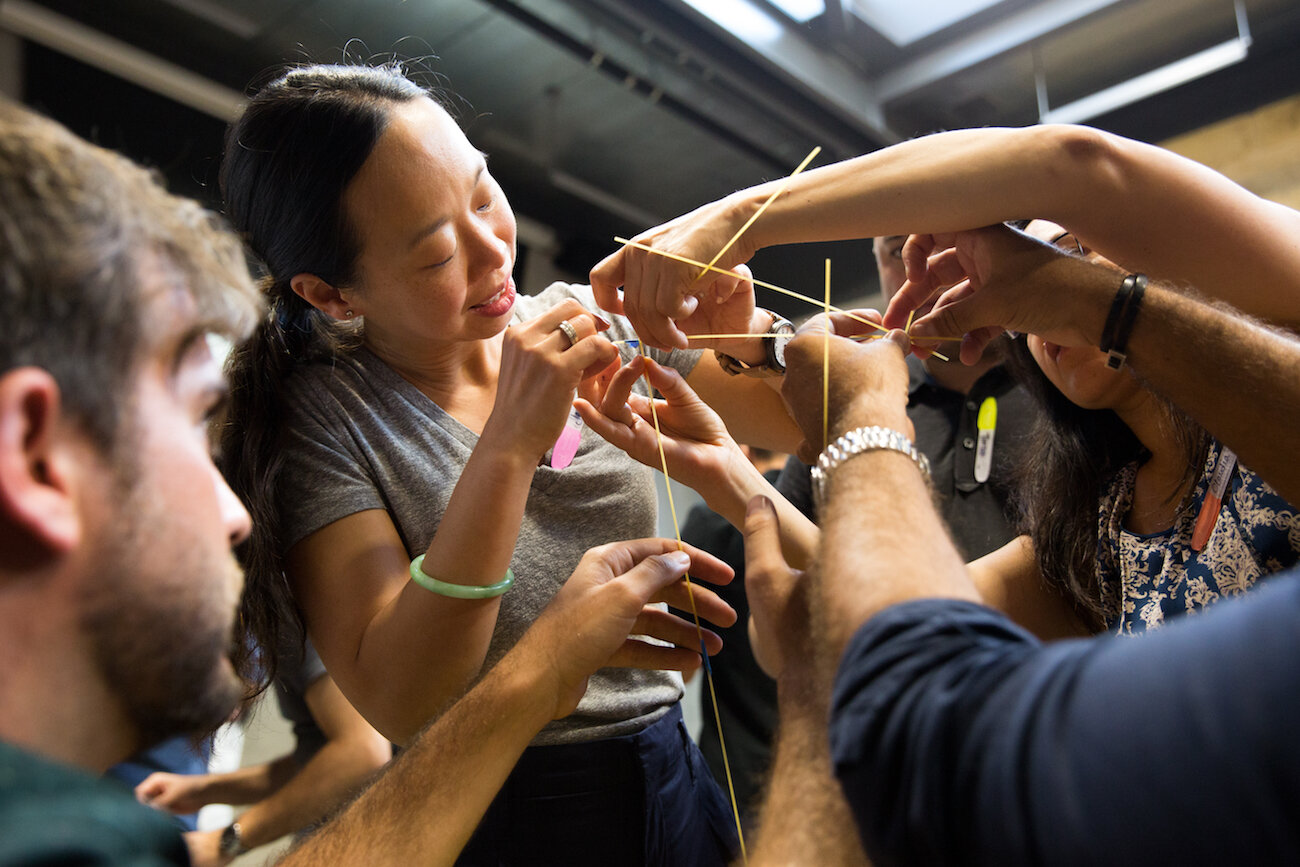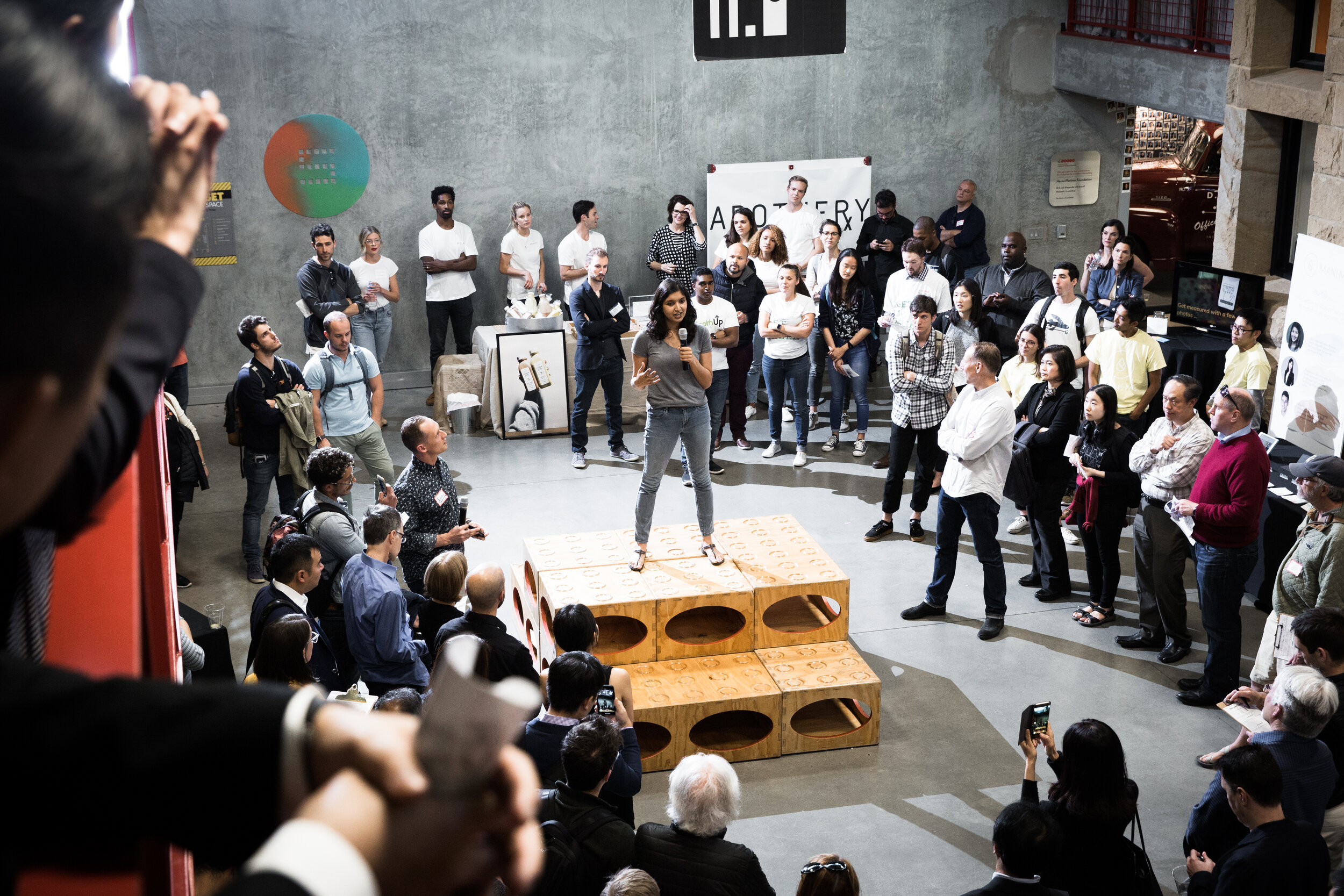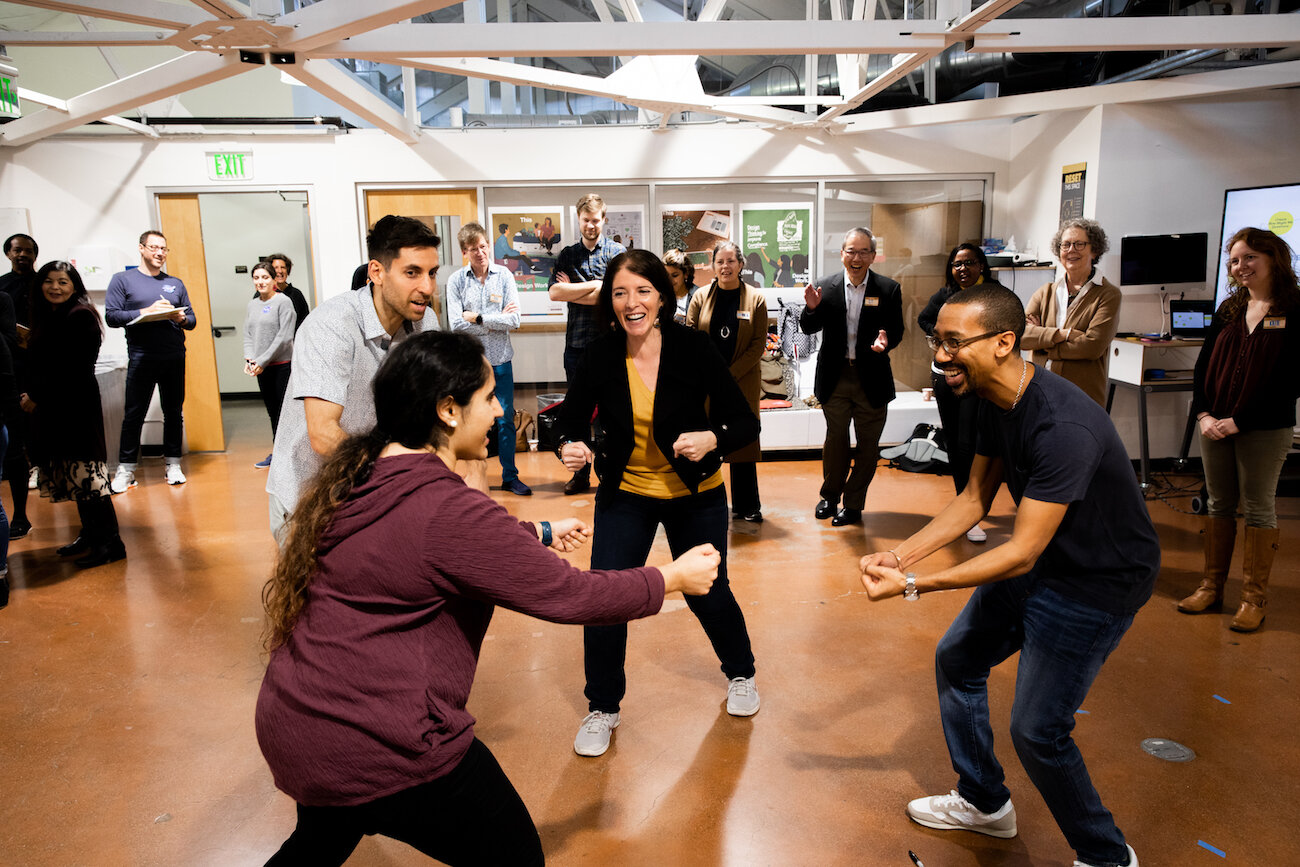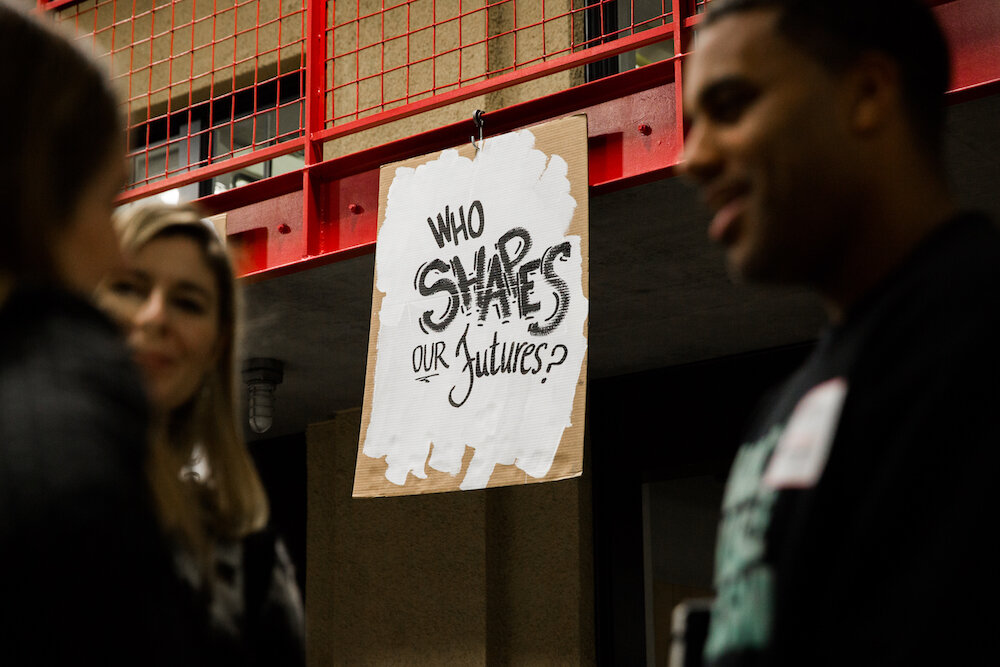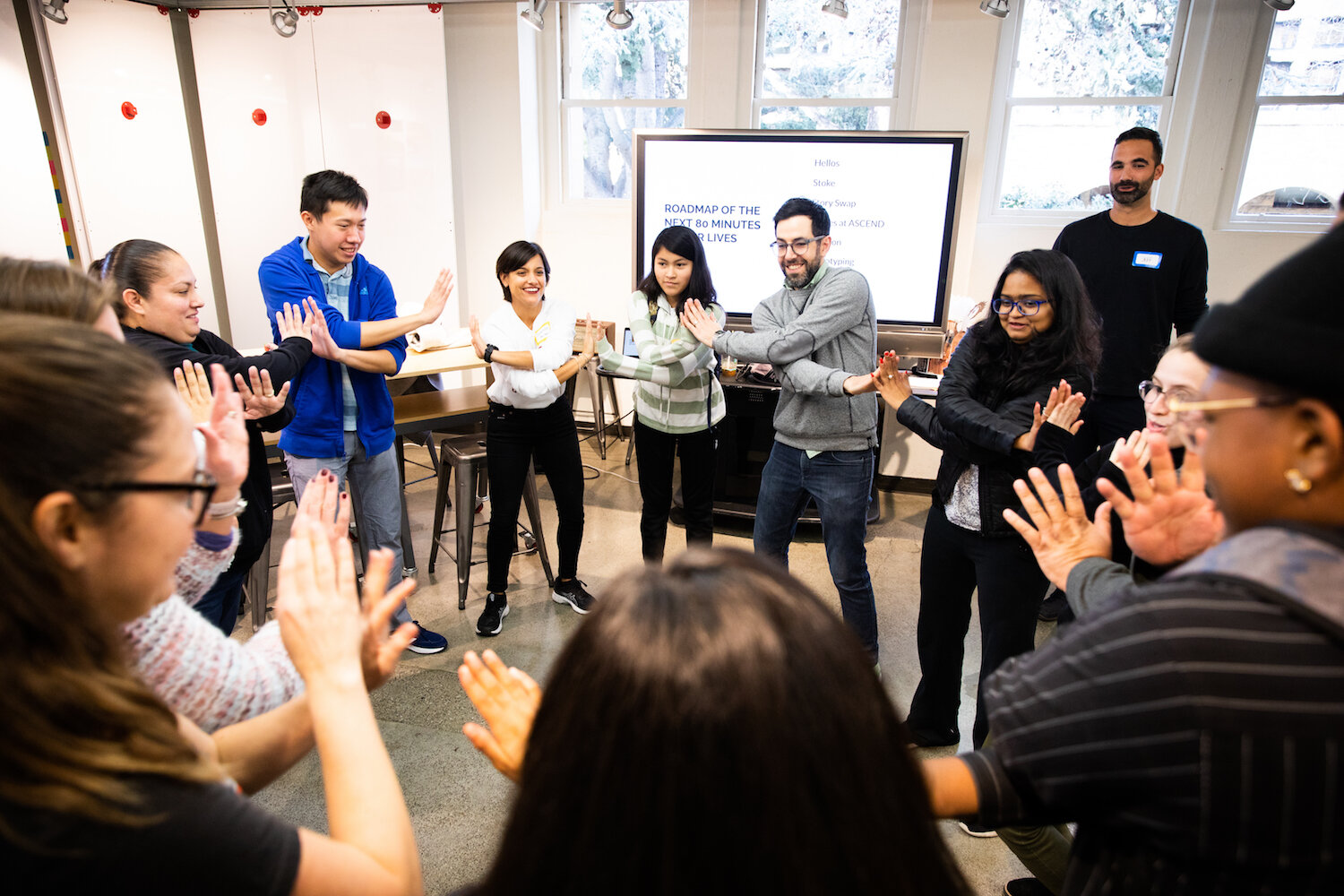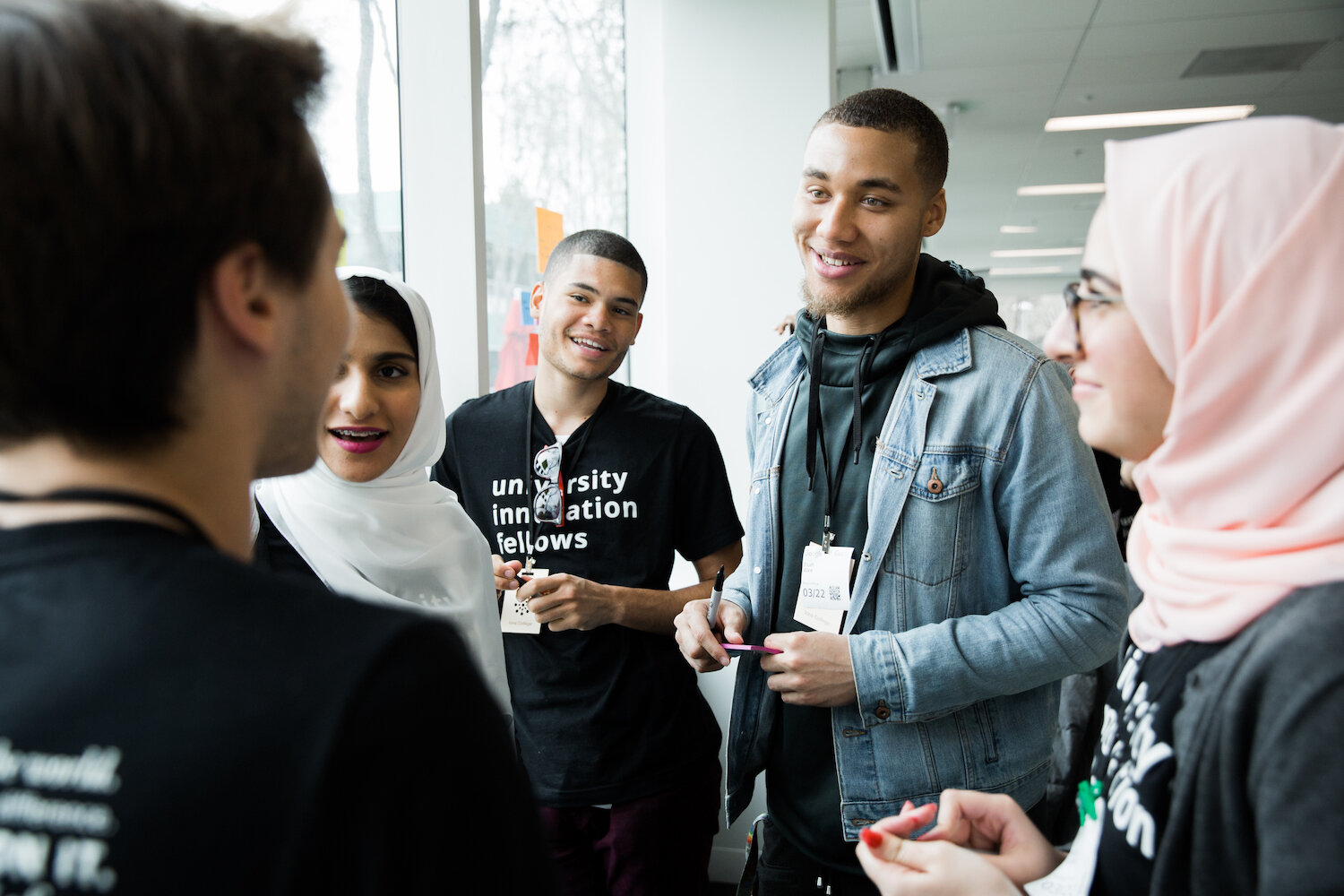The d.school’s mission is to help people unlock their creative abilities and apply them to the world. It reflects our foundational belief that design should be accessible to all, and that everyone is creative.
We believe design can help create the world we wish for. Design can activate us as creators and change the way we see ourselves and others. Design is filled with optimism, hope, and the joy that comes from making things change by making things real. We believe that diversity leads to better design, and opens up a greater range of creative possibilities.
“To achieve our mission, we need to tackle systemic barriers to diversity and inclusion, and build a fundamental sense of belonging for all members of our community. ”
The nature of design affords people the opportunity and privilege to shape the world that they–and others–inhabit. This is power. In a just world, that power is shared, prioritizing the voices and ideas of people most impacted by the intended and unintended effects of new designs. We aim to actively confront and challenge the mindset that design can only be used by a privileged few.
Given our ideals, we have work to do.
Every institution has a history, and ours is rooted in a limited set of perspectives. For example, the d.school is at an intersection of two systems of predominantly white, male, western thought and power: the field of design, and an elite university. These systems are full of visible and invisible barriers to equity. Our diversity on the basis of race, ethnicity, gender, sexuality, socioeconomic class, ability, religion, citizenship status, and additional backgrounds and identities is not as broad and deep as it can and should be.
We are committed to changing this picture. To achieve our mission, we need to tackle systemic barriers to diversity and inclusion, and build a fundamental sense of belonging for all members of our community. If we are successful, our community will be more diverse and all members will feel included and honored. Our work will evolve to incorporate values, ideas, and tools created and led by historically marginalized thinkers and doers.
While doing this work we will always be learning: from each other, from experts in equity work, from other designers and educators, and most importantly, from our students.
Current Work
Over the past several years our efforts have been characterized by individual learning, facilitated discussions, and thoughtful programmatic changes in many different parts of the d.school. As always, we’re learning by doing. This period has helped us align around equity and inclusion as priorities that touch every part of our work. Our journey will continue to evolve over time as we grow toward more unified approaches and establish measurable goals and accountability.
Here is a selection of our recent actions:
Providing small grants to d.school classes that included a focus on diversity, equity or inclusion has resulted in new curriculum, projects that explore design and equity, and increased racial diversity among our students.
Annually publishing demographic information about the composition of our student and instructor community has helped us understand who is at the d.school and who is underrepresented.
Embedding experts in diversity, inclusion, and equity work in d.school workshops for professional audiences as “auditors” has provided instructors with candid feedback from learners’ perspectives.
Partnering with and learning from experts from the National Equity Project, Code 2040, and inclusion experts at Stanford has been fundamental in helping build a shared vocabulary and deeper skills in addressing diversity, inclusion, and equity.
Providing training opportunities to d.school staff and instructors for personal reflection and advancement (at the d.school and with other organizations) has resulted in strong alignment towards shared equity goals.
Engaging over 100 members of the d.school community past and present to craft this statement over a period of nine months has served as an initial way to capture d.school values, activities, priorities, and intent going forward.
Future
Directions
In addition to continuing the practices described above, we will place new focus on the following goals, which don’t yet have precise solutions attached:
More comprehensively track and assess the outcomes of our efforts to increase diversity of participants in the learning experiences offered across the d.school.
Integrate newly established inclusion and equity practices in hiring and recruiting into all hiring across the d.school.
Identify and adopt the right practices for determining equity milestones by which we can concretely measure and share our progress over time, leading to greater accountability and ways to hold ourselves to our values.
Champion and develop new tools that help designers consider the equity and broader ethical implications and consequences of their creative work as a core tenet of design.
Build on and spread existing curriculum on ethics in design research, including the ethics of conducting design research and designing for or with vulnerable or less privileged populations.
